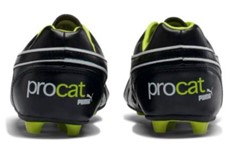On 27 August 2021, Caterpillar Inc (Caterpillar) won its appeal against the decision of the Australian Trade Mark Registrar to set aside the opposition ‘procat’ (PROCAT mark) by Puma SA (Puma).
Background
On 21 October 2016 (Relevant Date), Puma applied for the registration of PROCAT for goods in classes 18 and 25 including apparel, footwear, bags and accessories. Caterpillar opposed the application and based its opposition on its prior registrations for, and reputation in its CAT word and device marks, the primarly grounds of opposition being under ss42(b), 44 and 60 of the Trade Marks Act 1995 (Act). The Registrar found that all the grounds failed and concluded the CAT word mark was not deceptively similar to the PROCAT Mark for the purposes of s44 and that its use was minimal and insufficient to demonstrate the requisite reputation to establish the grounds of opposition under s60 and s42(b).
Appeal
Caterpillar appealed the Registrar’s decision and advanced three grounds of opposition, s 44, s 60 and s 42(b). O’Bryan J upheld Caterpillar’s grounds of opposition under ss 44 and 60.
In assessing the deceptive similarity under the Act, it was determined necessary to consider how a consumer would comprehend the mark objectively. O’Bryan J found that while ‘procat’ created its invented word, it was noticeable that it incorporated the words’ pro’ and ‘cat.’ Further, while Puma had not used the PROCAT mark in Australia, it had been used in the USA and Canada. The PROCAT mark was used on each of those products in lower case lettering and with the letters “pro” and the letters “cat” having different shades or colours:

Despite this, O’Bryan J maintained that it would constitute a use with alterations that would not substantially affect the identity of the mark.
O’Bryan was also satisfied that at the Relevant Date, Caterpillar had a substantial and valuable reputation in Australia in their word marks and logo marks for classes 18 and 25 (apparel, footwear, bags and accessories):

Evidence concerning the range of retail stores in which CAT branded footwear and socks was sold was extensively given to support their reputation claim.
His Honour also accepted Caterpillar’s evidence regarding the word ‘pro’ and its use to delineate professional products from novice products and concluded that the Australian consumers would understand the mark as being a professional “cat” or being favourable toward “cat”.
Given these findings, O’Bryan J concluded that there was a risk that consumers who were familiar with the CAT mark would be confused as to whether Puma’s goods with the PROCAT mark were connected with CAT branded goods. In doing so, there may be a risk that consumers would believe Puma’s goods as being a “professional” or high performance or otherwise a special line of CAT goods. As such, His Honour concluded there was “a real and not remote risk… that consumers would be caused to wonder whether there is commercial connection between PROCAT branded goods and Caterpillar.”
Given this finding under s44, it was unnecessary to consider the other grounds of opposition under s60 and s42(b), but O’Bryan J did provide comments on these grounds.
It was considered that Caterpillar established the s60 grounds. He did not accept Puma’s submission that the CAT marks had such a strong reputation in Australia that consumers were familiar with the CAT marks. Further, O’Bryan distinguished the decisions in Mars and Delfi, stating that CAT could not be described as famous like the brand’ Malteasers.’
Caterpillar’s opposition on the grounds of s42(b) concerning Australian Consumer Law ss 18 and 19 was considered redundant due to his findings regarding the grounds of s60.
